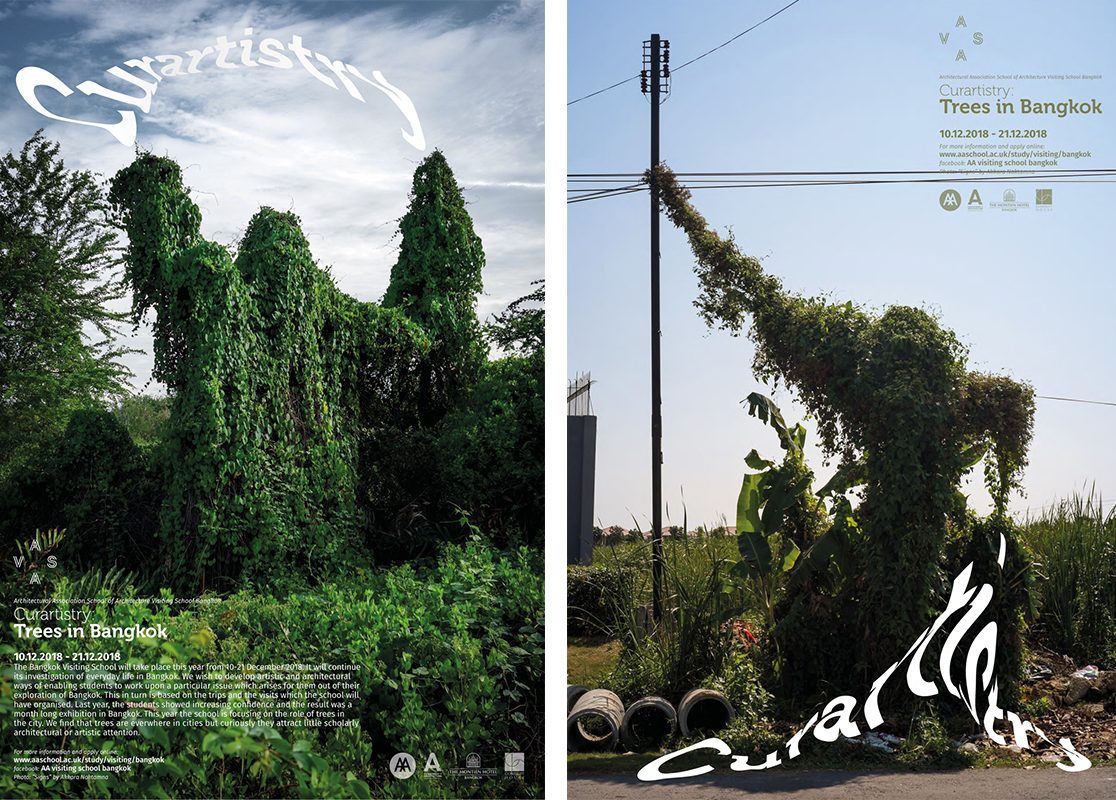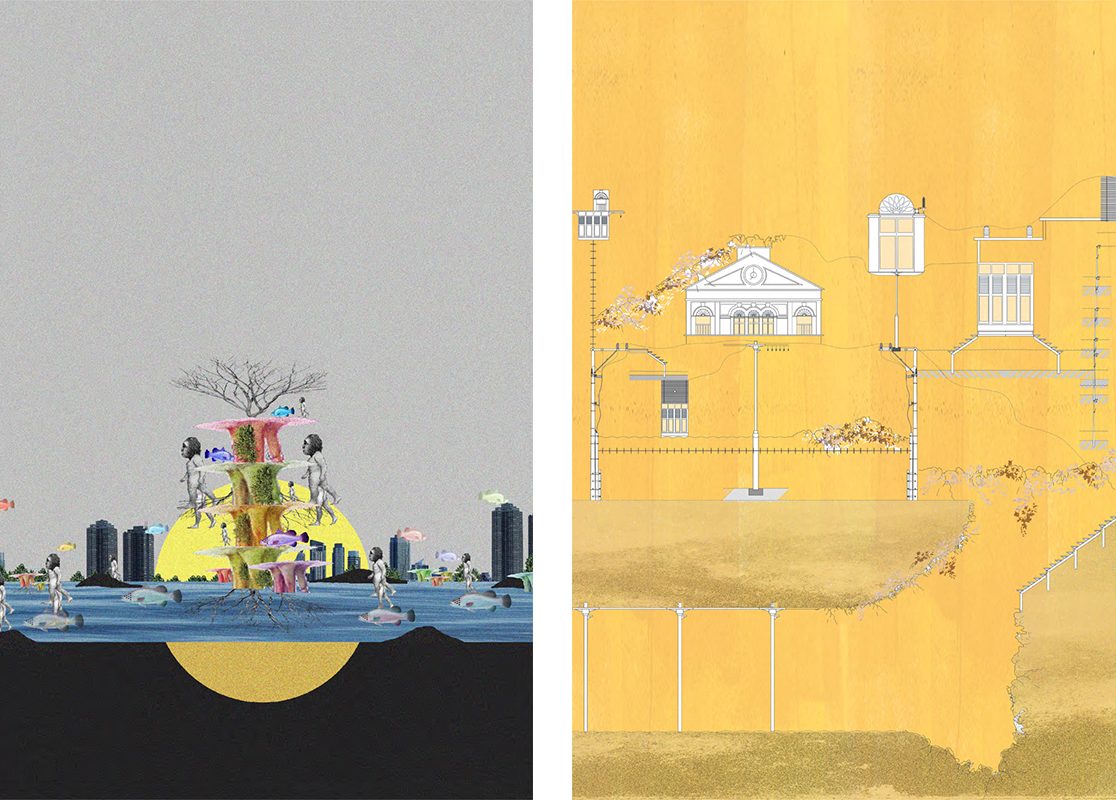ART4D SPEAKS WITH ASST.PROF.DR. ML CHITTAWADI CHITRABONGS, ONE OF THE MINDS BEHIND AA VISITING SCHOOL BANGKOK ABOUT THEIR LATEST WORKSHOP ‘CURARTISTRY: TREES IN BANGKOK’ WHICH INVESTIGATES THE CONCEPT OF EVERYDAY LIFE IN BANGKOK THAT ENABLES US TO LOOK AT TREES IN DIFFERENT WAYS
INTRODUCTION: NAPAT CHARITBUTRA
INTERVIEW: KANOKWAN TRAKULYINCHAROEN
COVER PHOTO: MELISSA MOORE
PHOTOS COURTESY OF AA VISITING SCHOOL BANGKOK EXCEPT AS NOTED
(For English please scroll down.)
ในขณะที่หลายๆ ปีมานี้ หลายภาคส่วนพยายามชูโรงเรื่องความสำคัญของพื้นที่สีเขียวกัน ไม่ว่าจะเป็นการวิพากษ์การตัดต้นไม้ของภาครัฐที่ดูจะไม่เสียดายเวลากว่าที่ต้นไม้เหล่านั้นโตขึ้นมา หรือในแง่การเพิ่มพื้นที่สาธารณะที่คนเมืองทุกคนสามารถใช้ร่วมกันได้ คำถามตั้งต้นที่เราอยากชวนให้คิดกันในครั้งนี้คือ เราจะสามารถมองต้นไม้ในประเด็นอื่นนอกเหนือจากการรักษาสิ่งแวดล้อมได้หรือไม่
ศิลปิน Ang Song Nain พูดถึง “การควบคุม” ธรรมชาติในพื้นที่เมืองว่ามันช่างย้อนแย้งกับคำว่า “เคารพ” เสียเหลือเกิน ประเด็นนี้ถูกชูขึ้นมาในประเทศพื้นที่จำกัดอย่างสิงค์โปร์ ที่ประชากรส่วนใหญ่ถูกแวดล้อมด้วยธรรมชาติจำแลงมาตลอดชีวิต กลับมามองในประเทศไทย ในประเทศเราต้นไม้สามารถขึ้นได้ (เกือบ) ทุกที่และทุกเมื่อ สิ่งแรกที่ developer ต้องทำก่อนจะสร้างอาคารขึ้นมาบนพื้นที่ว่างเปล่าคือการถางพงหญ้า และตัดต้นไม้ให้หมดก่อน หรือมองไปตามหมู่บ้านจัดสรร ตามบ้านที่ไม่มีคนอาศัยสัก 1 ปี เราจะพบว่าพื้นที่ของมนุษย์ได้ถูกต้นไม้เอาคืนไปเรียบร้อยแล้ว
เมื่อปลายปีก่อน AA Visiting School Bangkok ซึ่งจัดขึ้นเป็นประจำทุกๆ ปี พาเรากลับไปสำรวจเนื้อหาเกี่ยวกับต้นไม้ในกรุงเทพฯ ไม่ว่าจะเป็นการตั้งคำถามถึงบทบาทของต้นไม้ ความสัมพันธ์ของมันกับท้องถนน การเปลี่ยนแปลงตามฤดูการของต้นไม้ว่ามันส่งผลต่อภาพเมืองอย่างไรบ้าง คาแร็คเตอร์ของต้นไม้ในที่รกร้างในเมือง กินความไปถึงร่างของต้นไม้ตายยืนต้น และต้นไม้ปลอม เราคิดว่าประเด็นที่ AA Visiting School Bangkok ทำเวิร์คช็อปในครั้งนี้น่าสนใจ และน่าจะเปิดประเด็นให้คนคิดถึงแง่มุมต่างๆ ของต้นไม้ได้ไม่น้อย เช่นเดียวกันกับ process ที่ชื่อว่า Curartistry ที่ใช้ในการดำเนินกิจกรรมครั้งนี้ art4d ได้พูดคุยกับ ผศ.ดร.ม.ล. จิตตวดี จิตรพงศ์ ถึงเบื้องหลังการทำเวิร์คช็อปในครั้งนี้
art4d: โปรเจ็คต์ Curartistry ที่คุณกำลังทำอยู่นี้มันคืออะไร และเริ่มต้นมาได้อย่างไร?
ML Chittawadi Chitrabongs: เราทำ Curartistry ต่อกันมา 3 ปีแล้ว คือ AA Visiting School เป็นเหมือนกับนโยบายของ AA School of Architecture ในลอนดอน ว่าเขาจะให้ศิษย์เก่าที่กลับไปอยู่ตามเมืองต่างๆ เสนอโปรเจ็คต์เข้ามา ใครได้รับเลือกก็จัดกลุ่มกันขึ้นมาเอง คือเรียกได้ว่าเป็นโรงเรียนในฝันเพราะมันไม่มีขอบเขต จะเป็นนักเรียนสถาปัตย์ แลนด์สเคป ทฤษฎี แฟชั่น หรือว่าศิลปะก็ได้ ปีนี้ก็มีอาจารย์อยู่ที่คณะอักษรศาสตร์ที่จบปริญญาเอกมาจากญี่ปุ่นที่ทำเรื่องต้นไม้ในวรรณคดีญี่ปุ่น เขากำลังจะมาทำเปรียบเทียบที่ไทยกับต้นไม้ในวรรณคดีไทย พอเห็นคอร์สนี้ก็เลยมาลง ถือว่าเป็นอะไรที่สนุก เพราะว่ามันไม่ได้มีขอบเขต แล้วก็เป็นเวิร์คช็อปสั้นๆ แค่สองสัปดาห์
art4d: ในระหว่างสองสัปดาห์นี้ทำอะไรกันบ้าง
CC: มันจะมีอยู่ 3 ขั้นตอน Curartistry เป็นกระบวนการทำงาน (process of work) ที่เราคิดมันขึ้นมาเอง ส่วนที่หนึ่งจะมีสถานที่ สิ่งของ หรืออะไรก็ตามที่อยู่ในกรุงเทพฯ ที่เรารวบรวมเป็นลิสต์ขึ้นมา เราก็จะให้นักเรียนไปดูตามลิสต์สถานที่และสิ่งของที่ว่านั้น และให้เขาเขียนอะไรสั้นๆ อาจจะเป็นประเด็นที่เขาสนใจ ตั้งคำถาม หรือว่าจะคิดกับมัน ส่วนใหญ่เราก็จะให้ถ่ายรูปเพราะมันเร็วที่จะสื่อสารสิ่งที่เขาค้นพบ ทำอย่างนี้ไปครึ่งทาง หรือประมาณสัปดาห์หนึ่ง อีกครึ่งหนึ่งเราก็จะเริ่มให้ผู้เข้าร่วมคิดว่าจะจัดแสดงผลงานของเขากันยังไง ของปีนี้บังเอิญว่าเราไปได้สเปซที่โรงแรมมณเฑียรที่กำลังรีโนเวต ซึ่งมันค่อนข้างน่าสนใจมาก
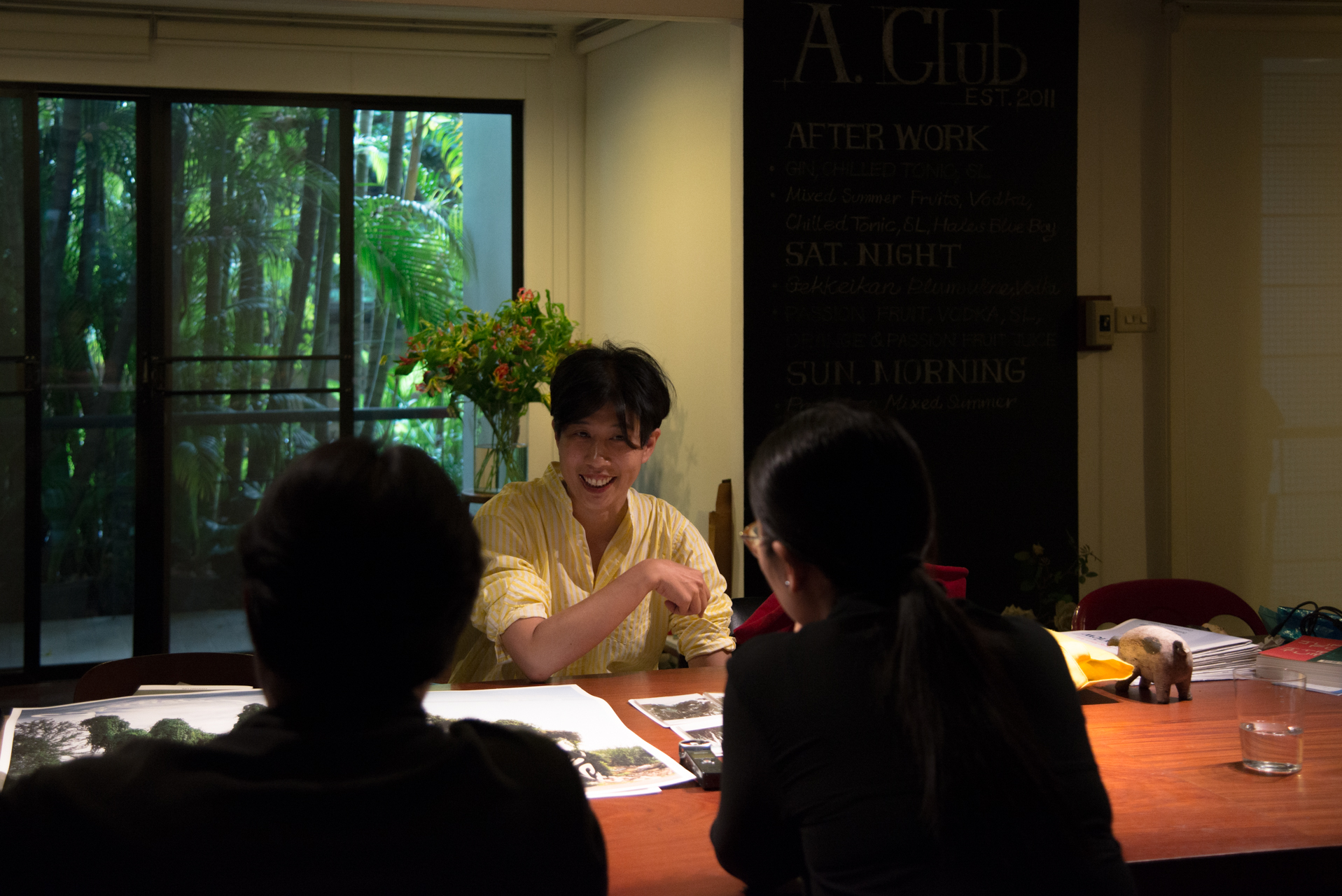
Photo : Napat Charitbutra
art4d: ช่วยเล่าถึงตัวสิ่งพิมพ์ของงานในครั้งนี้หน่อย
CC: หน้าปกเราได้ Melissa Moore ที่เขาถ่ายรูปต้นไม้มาประมาณ 4 ปีแล้ว มาเป็นคนถ่ายปกให้ เราพาเขาไปถ่ายหลายๆ ที่ หนึ่งในนั้นคือบ้านปลายเนิน ตอนเราพา Melissa ไปถ่าย เขาก็เงียบๆ ของเขา แต่พอเขาส่งภาพมาให้ดูคือมันสวยมาก ใช้ได้เกือบ 80% อันที่สวยที่สุดได้ตัดสินใจเลือกกันไปคือรูปกอกล้วยพัดที่เอามาขึ้นปก
art4d: ตอนแรกที่เห็นภาพนั้นเรานึกว่าเป็น collage กัน
CC: คือภาพที่ได้มัน dramatic มากเลย อย่างภาพนี้เราพาไปที่วนอุทยานไม้ล้อมตรงคลอง 14 (ปทุมธานี) เป็นเหมือนหมู่บ้านจัดสรรที่เอาไว้ขายไม้ล้อม เขาแบ่งแต่ละแปลงเป็นร้านใครร้านมัน มีอยู่ร้านหนึ่งในนั้นเป็นต้นไม้อายุกว่า 100 ปี ก็ไม่รู้เหมือนกันว่าเขาขุดมาจากไหน เราไปเห็นต้นเบาบับ (Baobab) แบบในหนังสือ The Little Prince คือเขามีต้นนี้อยู่ในร้านด้วย ซึ่งมันมหัศจรรย์มาก ไม้ที่ขุดมา สมมติขุดมาแล้วสีของเนื้อไม้เป็นสีแดง เขาก็จะประคบประหงบมันไปสัก 5 เดือน แล้วต้นไม้ต้นนั้นก็จะเปลี่ยนไปเหมือนเป็นคนละต้นเลย กระทั่งสีของเนื้อไม้ยังเปลี่ยนไป คือเขาเป็นมืออาชีพ มองในแง่มุมหนึ่งมันดูโหด เพราะทุกต้นไม้ทุกต้นอยู่ได้ด้วยไม้ค้ำ แต่ถ้าคิดอีกแง่หนึ่งคือจริงๆ เขาเป็นผู้เชี่ยวชาญเฉพาะทางที่มีโอกาสมากกว่าในการทำมันให้รอด ถ้าพูดในเชิงที่ว่าสถาปนิก spec แบบแล้วอยากจะได้ต้นไม้ใหญ่ เขารู้ว่าต้องทำยังไง เขารู้วิธีขนส่ง รู้วิธี nurse มัน

Photo: Napat Charitbutra
art4d: คุณมาเจอกับที่นี่ได้ยังไง
CC: เราก็ต้องทำรีเสิร์ชหา ใช้คอนเน็คชั่นคุยกับคน อย่างตรงนี้เป็นที่ที่ปูกับปลา (กัญญพร และกรกมล แก้วประเสริฐ) แนะนำ พอเราไปเห็นแล้วก็รู้เลยว่ามันใช่ มัน provocative มาก ต้นไม้มันเหมือนครึ่งเป็นครึ่งตาย มันสอนอะไรเราเยอะมาก การที่ไม้มันผลิใบมันไม่ได้เป็นสัญญาณของการมีชีวิต บางทีมันอาจหมายความว่ามันจะหายใจเฮือกสุดท้ายก่อนที่มันจะตาย มันก็มีประเด็นเยอะมากอยู่ข้างในนั้น แฟนตาซีของสถาปนิก แฟนตาซีของเจ้าของ ระบบที่เกิดขึ้นทั้งระบบกับการขนย้ายไม้ใหญ่ ที่นี่น่าจะเจ๋งที่สุดในปีที่ผ่านมานี้
ตอนทำคอร์ส Everyday Life ไอเดียก็คือเราใช้งานของ Maurice Blanchot ช่วงปี 1960s ที่เขาเอ่ยว่าจริงๆ แล้วชีวิตประจำวันมันไม่ได้เป็นเรื่องที่เกี่ยวกับ routine ไม่ได้เป็นเรื่องน่าเบื่อทำซ้ำๆ แต่เขาต่อยอดไอเดียของ Henri Lefebvre ที่เขียน Critique of Everyday Life และมองว่ามันเป็น struggle ที่อยู่ในเมือง โดยเฉพาะถนนหนทางในเมือง โดยสิ่งที่ Maurice มองหา และต้องการจะจับคือ magical moment ที่เกิดขึ้นในชีวิตประจำวันตามถนนหนทาง ก็เลยรู้สึกถูกใจ เหมือนที่ Beatriz Colomina ก็พยายามที่จะทำประเด็นเรื่องชีวิตประจำวันเหมือนกัน แต่เขาทำเรื่องสนามหญ้าของคนอเมริกัน พยายามหาว่าทำไมในสหรัฐอเมริกาถึงปลูกสนามหญ้า ประเด็นเรื่องว่าสนามหญ้าเป็นสิ่งประดิษฐ์อย่างหนึ่ง ทำไมสนามหญ้าต้องอยู่หน้าบ้าน สวนส่วนตัวอยู่หลังบ้านแล้วก็เล็กๆ แต่ว่าพอมาดูที่กรุงเทพฯ เรื่องนี้เราอุดมสมบูรณ์มาก ลักษณะที่จะเขียนถึงหรือคิดกับมันมีเยอะเหลือเกิน ช่วงเวลาที่มหัศจรรย์ต่างๆ ในชีวิตประจำวันของเราทั่วไปนี่มันสามารถเกิดขึ้นได้ตลอดเวลา ไอเดียก็เป็นประมาณนี้
ตัวอย่างที่น่าจะให้ภาพได้ชัดคือ โปรเจ็คต์ของนักเรียนแลกเปลี่ยนฝรั่งเศสคนหนึ่งที่มาทำธีสิสในกรุงเทพฯ เรื่อง Phantomagoria หรือ Fear of Ghost in Public Spaces (อาการกลัวผีในพื้นที่สาธารณะ) พอเขากลับมากรุงเทพฯ อีกครั้ง เขาก็เริ่มบันทึกวิดีโอเกี่ยวกับการกลับมาของอะไรบางอย่างในอดีต เขาใช้คำว่า “ผี” ที่อยู่ในพื้นที่สาธารณะในปัจจุบัน เช่นในห้างสรรพสินค้า การตัดสินใจที่จะวางเปียโนแบบเล่นเอง แล้วให้เล่นเพลงของ Mozart เขามองว่ามันเหมือนการเรียกวิญญาณของ Mozart เข้ามาในพื้นที่สาธารณะ
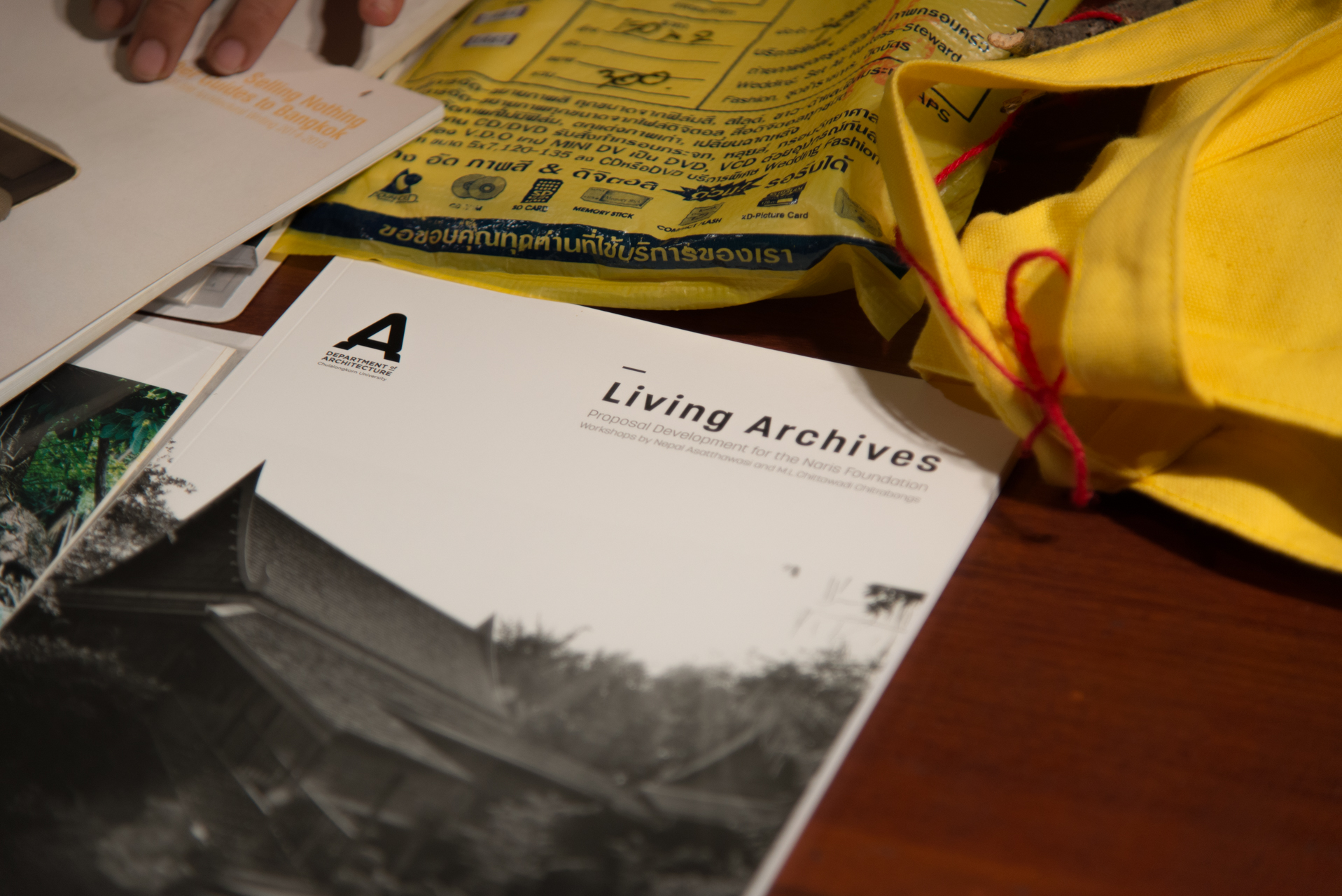
Photo : Napat Charitbutra
art4d: ช่วงแรกของโปรเจ็คต์ตอนที่พยายามปรับจูนกับคนในเวิร์คช็อป มีความยากลำบากแค่ไหน หรือว่ามันก็เป็นบทสนทนาที่เกิดขึ้นร่วมกัน
CC: เราทำ process of work แบบนี้ (Curartistry) กันมาได้ 3-4 ปีแล้ว เราเลยเริ่มจับทางกันได้ เพราะว่ามันเป็นงานที่เกี่ยวกับกระบวนการเสียมากกว่า ส่วนการแนะนำให้เขาเข้าใจว่าเรากำลังทำอะไรมันก็มีวิธีของมันอยู่ อย่าง Mark Cousins ที่เป็น Director ของ History & Theory Studies ที่ AA นี่เขาแทบจะเป็นปรมาจารย์ของสาขาประวัติศาสต์และทฤษฎีเลย ซึ่งเราก็ให้เขามาเลกเชอร์แค่ประมาณ 2-3 หน เพื่อที่จะไกด์แนวทางของงานให้ชัดเจนขึ้นแล้วยกระดับของงานขึ้นมาอีกที คือถ้าเกิดว่าเราปล่อยให้คนที่เพิ่งจะเริ่มตั้งไข่ไปคุยกับ Mark เลย เขาอาจจะล้มได้ แต่ถ้าเราคุยกับพวกเขาก่อน กรองก่อนรอบหนึ่ง แล้วค่อยส่งคนที่พอจะใช้ได้แล้วไปให้ Mark มันจะทำให้แนวทางความคิดของพวกเขามันพิเศษขึ้น คือสรุปว่ามันก็เป็นเรื่องที่ต้องใช้เวลา เป็นสิ่งที่มากับเวลา ตอนปีแรกๆ นี่น่าจะเรียกได้ว่าขาดทุน
art4d: แล้วคิดว่ามุมมองตัวเองเปลี่ยนไปเยอะไหมตลอด 3-4 ปีที่ผ่านมา จากจุดเริ่มต้นที่เริ่มทำจนถึงตอนนี้
CC: ก็เปลี่ยนค่ะ สนุกมาก ถ้าจะถามว่าเปลี่ยนไปยังไง ตอนที่เริ่มทำมันจะมีตัวอย่างที่ทำชื่อ Living Archive คือทั้งเล่มเป็น proposal ที่ทำให้บ้านปลายเนิน ว่าอนาคตน่าจะเป็นยังไง แต่อันนี้มันอยู่ในฟอร์แมตของ proposal ซึ่งมันก็สนุกไปอีกแแบบ ตอนที่มาเจอเรื่อง Everyday Life เนี่ยมันสุดยอดขึ้น มันใช่สำหรับกรุงเทพฯ
ติดตามแนวคิดเกี่ยวกับ Everyday Life และเรื่องราวอื่นๆ ของบทสัมภาษณ์นี้เพิ่มเติมได้ใน art4d 266

With a growing awareness in the significance of green space from both the public and private sector in these past several years, from criticism over the government’s operations that are responsible for the cutting down of trees with no consideration in the time it takes for these lives to grow, to an attempt to increase the number of public spaces. The primary question we ask you to contemplate here is whether ‘trees’ can be looked at from other possible aspects rather than environmental preservation.
The artist, Ang Song Nain, talks about the way nature is ‘controlled’ in urban spaces and how such phenomenon bears an ironic contrast to the constantly cited ‘respect nature’ discourse. The issue has been raised in the country of land scarcity such as Singapore where the majority of the population has been surrounded by the manmade nature all through their lives. Looking back to Thailand, the country that is fortunate enough for trees to grow almost practically anywhere and at any time of year, but the first thing most developers do before building a new structure on a piece of land is taking down trees and getting rid of all the growing plants. In housing estates mushrooming in the country’s suburban areas, a house being taken over by plants after a couple of years of being deserted is a common sight.
During the last months of 2018, AA Visiting School Bangkok took us back to revisit the stories of trees in Bangkok, from questioning the role of trees, and their relationship with the city’s pavements and roadways, the seasonal transformation of trees and the effects they have on the urban environment, the characteristics of trees growing in deserted urban spaces, all the way to the bodies of standing snags and artificial plants. The issues brought forward by this workshop by AA Visiting School Bangkok are not only interesting but also kindle some new discussions and aspects we have for trees. Equally interesting is the process of ‘Curartistry’ behind the conceptualization and operation the workshop. art4d talks with Asst.Prof. ML Chittawadi Chitrabongs, the heart and brain behind it all.
art4d: Could you tell us about the project ‘Curartistry’ that you’re working on, what is it and how was it originated?
ML Chittawadi Chitrabongs: Curartistry is a project that has been going on for 3 years now. Essentially, it’s AA Visiting School, which is a part of the policy of the AA School of Architecture in London where they offer opportunities for graduates who have been living in cities around the world to propose projects they want to do. If selected, the alumni have to form a team and work on the project. It’s kind of like a school of your dreams because there are no boundaries. You can be a student in architecture, landscape, fashion, theory, or art. This year we have a professor from the Faculty of Arts who is a PhD graduate from Japan and is working on the subject of trees in Japanese literature. She’s doing a comparative study in Thailand about trees in Thai literature so she came to know about the course. It was a really fun experience because there really wasn’t any barrier and it was only a short, two-week long workshop.
art4d: What did you do throughout the two-week period of the workshop?
CC: There are three processes. Curartistry is the process of wok that I came up with. The first one includes places and things in Bangkok. I put together a list and the students would go see these places and objects in the list and write out their thoughts about the issues they’re interested in, and want to ask or further pursue. Mostly, I would advise them to take photos because it’s the quickest way to communicate what they experience or discover. We also have tutorial sessions. We would do after we’re half way into the workshop, which is around the end of the first week, and then we would ask them to think about how they want their works to be exhibited. This year, we happen to get to work with the space at The Montien Hotel Bangkok, which is currently going through a major renovation.
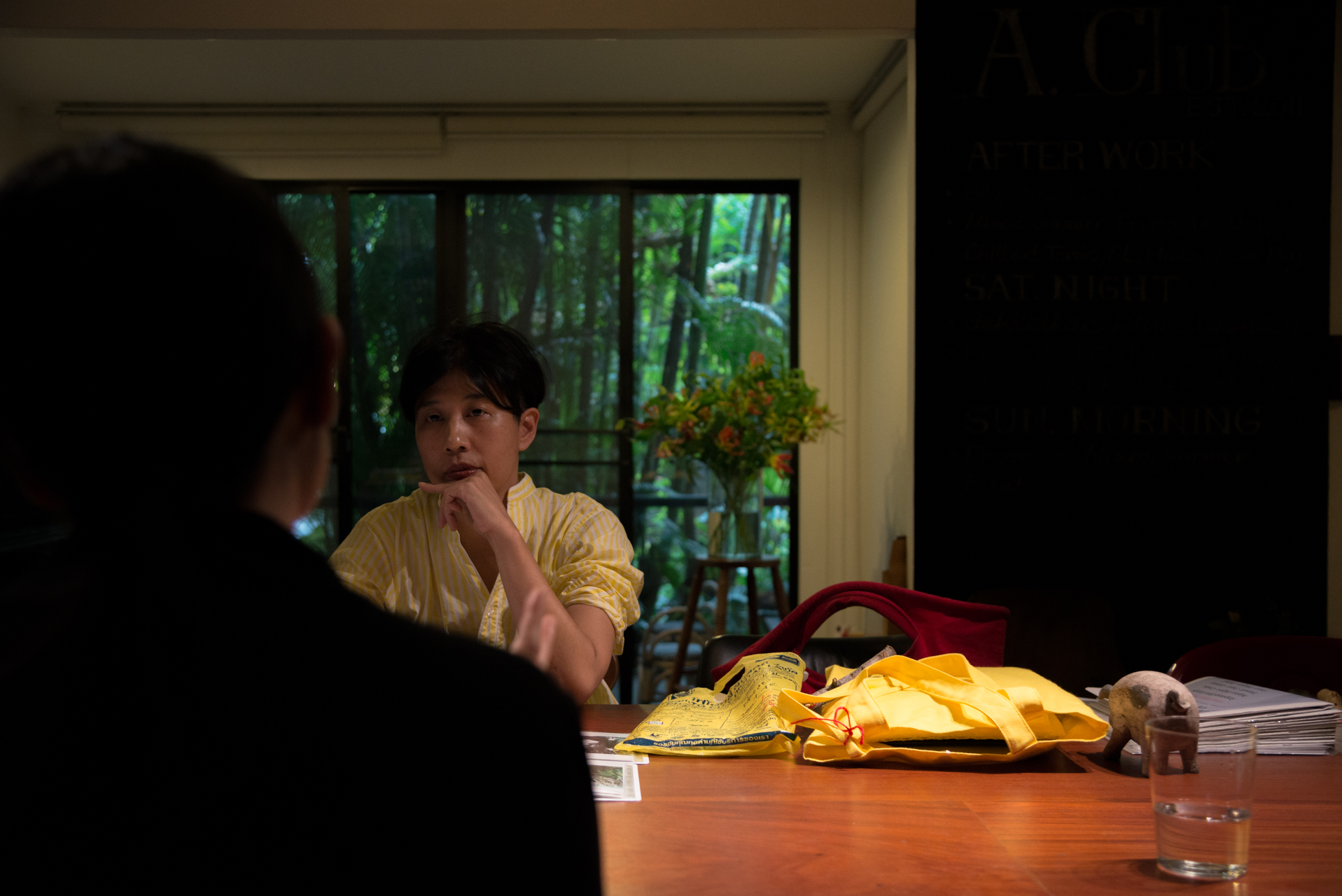
Photo : Napat Charitbutra
art4d: Could you tell us a bit more about the publication of the project?
CC: Melissa Moore, who has been taking photographs of trees for 4 years, did the cover shoot. The plan was to take her to all these different places and one of them was the Plai Nern Palace. When I took her there, she was just working, quietly. But the pictures she later sent us were amazing and we ended up using almost 80% of it. The most beautiful one, which we decided to use for the cover, is the picture of the traveller’s palm.
art4d: The first time we saw that picture, we thought it was a collage.
CC: There’s this really dramatic feel to them. Especially with this photo, which was taken when we took her to Mai Lom Forest Park in Khlong 14 of Pathum Thani province. It’s the place where they sell balled-and-burlapped plants. It’s like this community of tree sellers whose shops occupy different plots within the same property. There is this one shop in particular and they have these trees that are like 100-200 years old. I don’t know where they found them but I think they’re from here in Thailand. It was there when I first saw a real baobab tree like the one in The Little Prince. It’s amazing that they have this kind of trees. The ones that had been dug up, if the wood was starting to turn red, they’d spend 4-5 months nurturing them and these trees would practically transform into entirely different trees. Even the color of the wood changes. They’re highly professional people. It looks kind of ruthless when you see all these poles are brought in to prop up the trees preventing them from falling down. But when you look at it from another perspective, these people are specialists with a very specific expertise and these trees have more chance of surviving under their care. And if you were talking about architectural specification, they would know what to do, how to properly transport and nurse these trees.
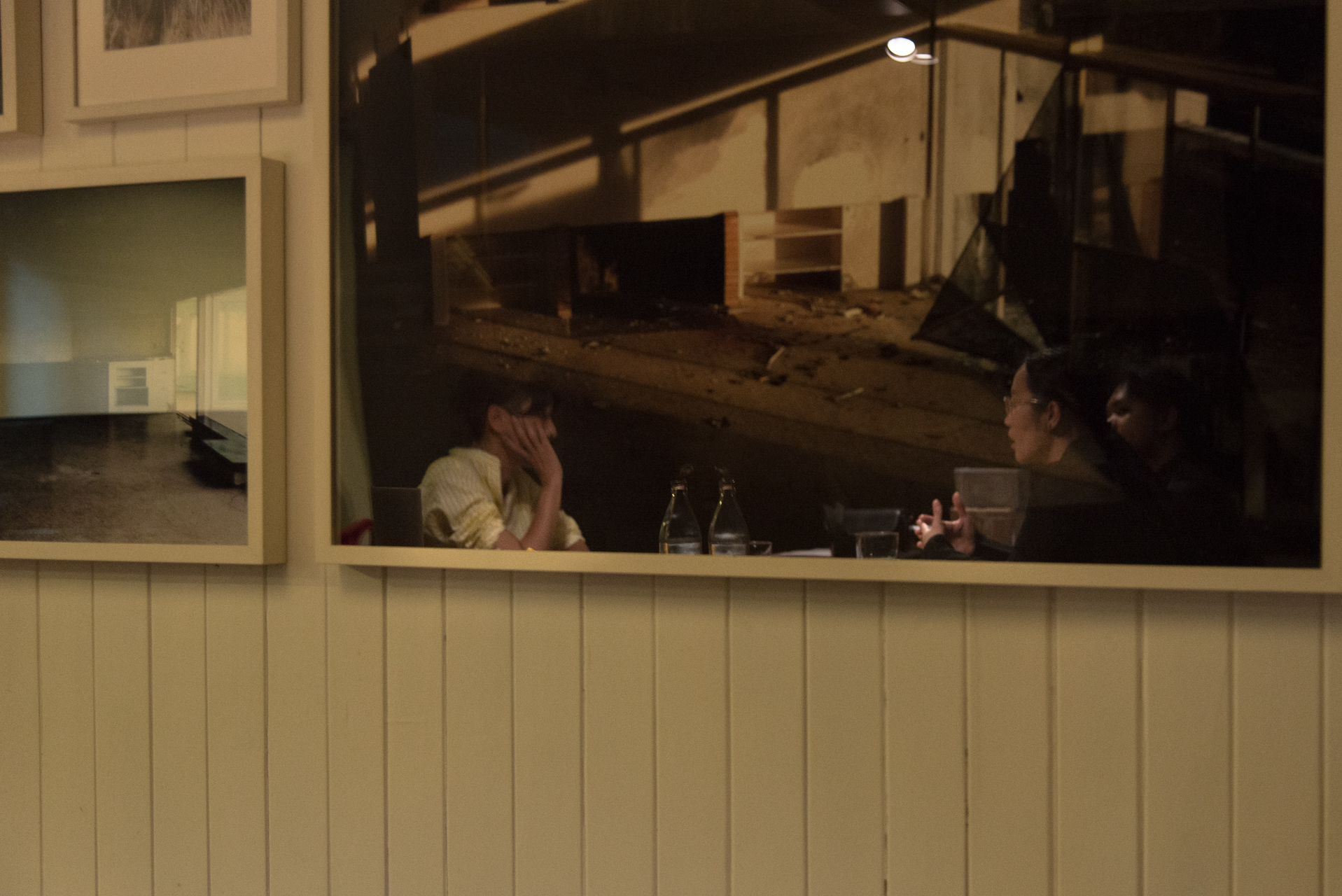
Photo : Napat Charitbutra
art4d: How did you find this place?
CC: We did some research, using the connection that we have and talk to some people. Kanyaporn and Kornkamol Kaewprasert told us about this place and once we got there, we just knew that this was the place. It’s so provocative. These trees are in this half-dead stage and it taught us a lot of things. Sometimes, an appearance of new leaves isn’t a sign of life, but the last breath a tree takes before it dies. There are so many issues surrounding it; the architects’ fantasies, the owners’ fantasies, the entire system that is operated for the transportation of these large trees. It was probably the coolest place that I had come to known in 2018.
The genesis of the course that I do on Everyday Life is Maurice Blanchot’s works in the 1960s. Blanchot stated that everyday life actually has nothing to do with the routines that we have because it’s not a repetitive mundaneness. He extends the idea proposed by Henri Lefebvre who wrote Critique of Everyday Life and how it’s an urban struggle, especially with all the roads and streets. But what Blanchot was looking for is so difficult to grasp, and it is almost like this magical moment that takes place unexpectedly and unknowingly in our everyday life, on the sides of the streets. I really love the concept. It’s kind of like how Beatriz Colomina was trying to pick up on the notion of everyday life but she focuses on the American lawn. She was trying to figure out the rationale behind the popularity of front lawn among the American people and the notion of the lawn as a type of invention. Why a lawn at the front of a house, and why a small garden at the back? Those were the issues and discussions Colomina was trying to bring forward and work with. As for Bangkok, the city is affluent with this type of issues and stories. There are so many possible ways to think or write about them. And I’ve bee very hooked by these magical moments in our everyday life and how they can happen at any seconds. That’s pretty much the idea.
A good example for this kind of idea is the thesis by a French student who came to work on his topic in Bangkok about Phantomagoria, or Fear of Ghost in Public Space. When he returned here, he started to record some video footages about the return of things from the past. He uses the word ‘ghost’ to refer to these spiritual beings residing in public spaces such as department stores. The decision to set up a piano on the automatic self-playing mode reciting Mozart’s music is like calling the sprit of Mozart into these public spaces. This kind of thing is he was looking for.
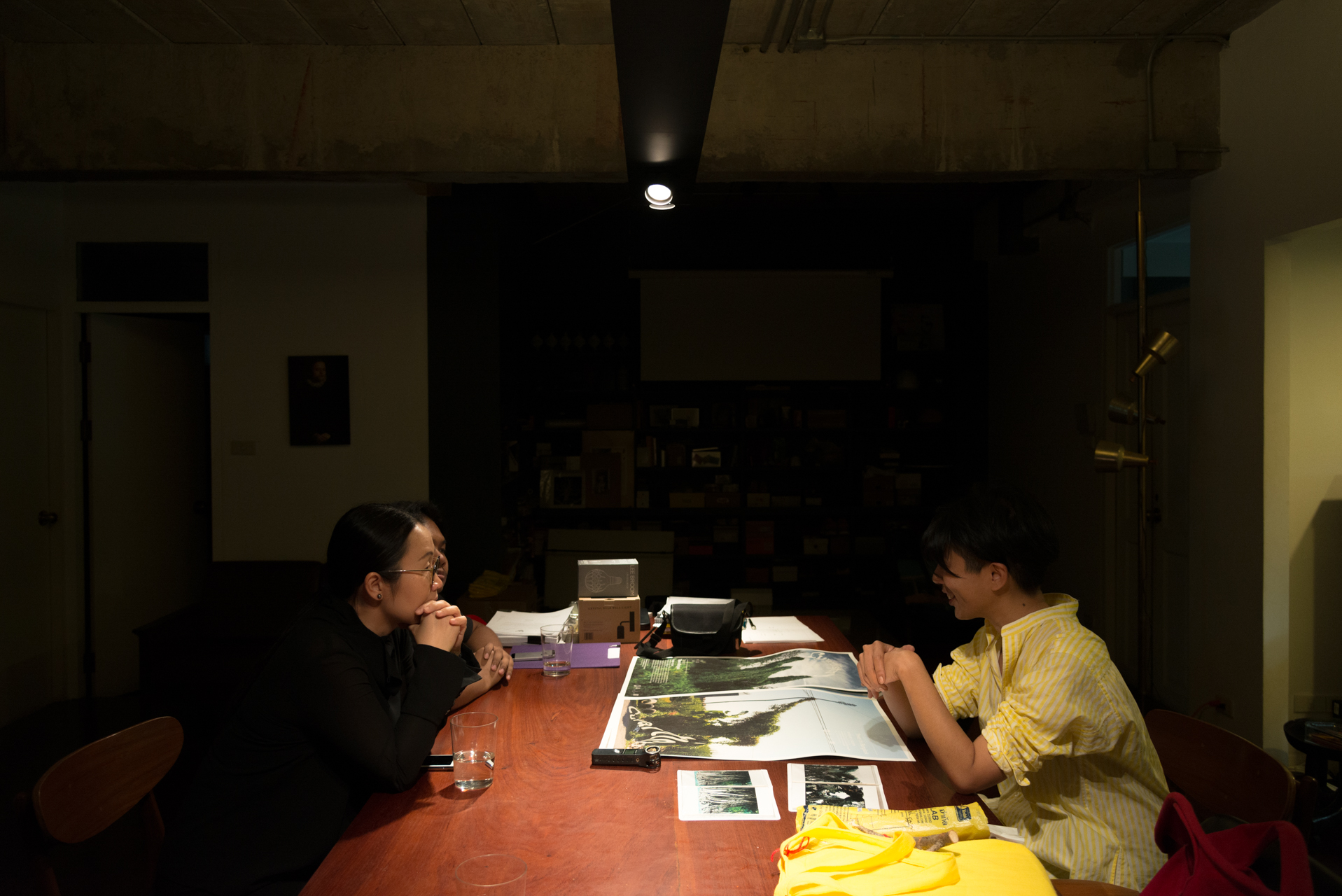
Photo : Napat Charitbutra
art4d: When you first started, were there a lot of difficulties finding the tune with the people who came to the workshop or it was just a mutual, organically developed discussion?
CC: Curartistry is actually a process of work that we have been working on for 3-4 years now. We’re getting more familiar with the process and it’s getting easier. Most of the times, it’s about the process itself while the tutorial whose main objective is to provide a better understanding of what we’re doing has its own methodology. We have Mark Cousins, a Director of History & Theory Studies at the AA, who is practically the master of the fields. So when Mark works with us, he would give about 2-3 lectures before providing a guideline, which could help take a work to another level. It’s putting the right man in the right job kind of thing. If I sent a student who was still very inexperienced and new to the whole thing to see him, it might not go well especially on the student’s part. But if I got to be the first person who talks to him or her, and we got to refine the ideas and work around the process to a certain extent, and then I sent the student off the Mark, he would help make the concept more special. A little talk, few adjustments here and there, and things seem easier for everyone. In a nutshell, it’s a process that takes time. We practically didn’t make any profit out of it during the first couple of years.
art4d: Has your perspective changed, after 3-4 years of working on the project?
CC: It has. But if you ask me how it has changed, it could be a long story. When I first started, there’s a mock up called Living Archive, and it’s essentially a proposal that I did for Plai Nern Palace and the possible future for the place. But it’s in the format of a proposal, which was fun in its own way. But Everyday Life is much more extra. The concept fits Bangkok so well.
Follow more ideas about Everyday Life and other stories from the conversation in the forthcoming art4d 266.


